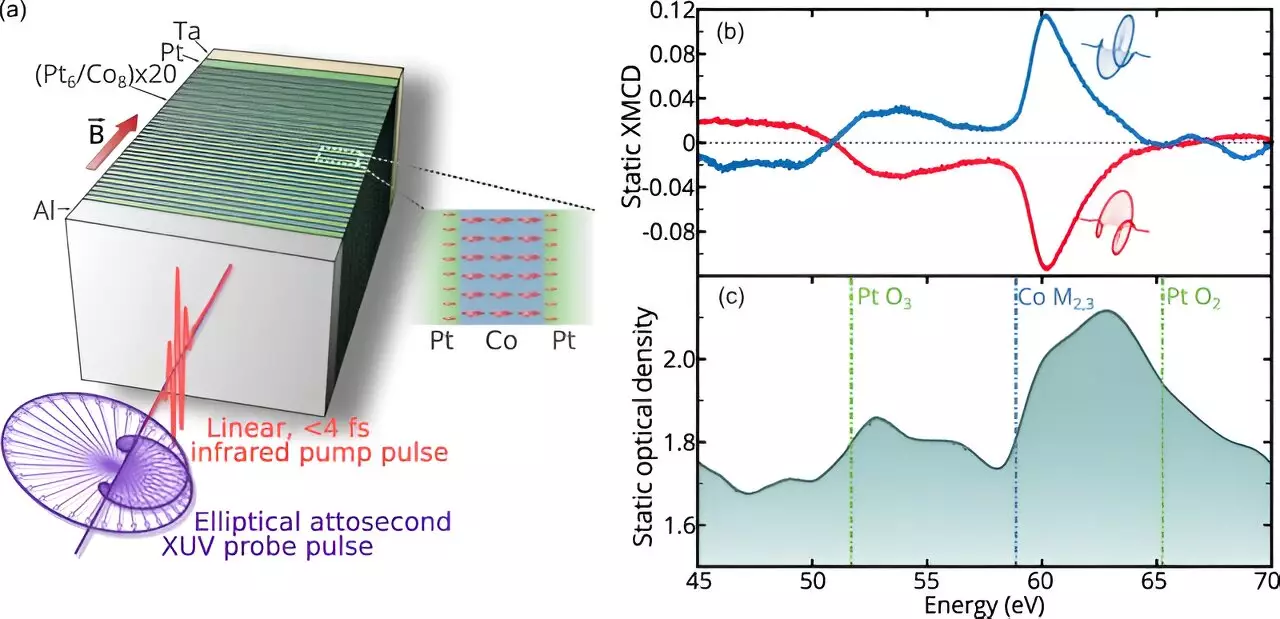In the realm of modern electronics, the quest for faster and more efficient devices has spurred significant interest in the phenomenon of spin currents. Spin currents represent a unique flow of electrical charge where electrons are not merely transferred, but rather are organized based on their intrinsic angular momentum, or “spin.” This concept holds the promise of drastically enhancing the performance of electronic components, potentially leading to devices that are not only quicker but also consume less energy. A groundbreaking study published recently in the journal *Physical Review Letters* has unveiled a novel method of directly generating spin currents, challenging previous methodologies that relied on indirect means.
The research conducted by an international team of physicists introduced a breakthrough approach by leveraging ultrashort laser pulses to create aligned spin currents directly. While earlier attempts to generate these currents predominantly involved indirect strategies, where lasers would first produce electrons with mixed spin orientations, the new technique circumvents these inefficiencies by directly aligning the spins of electrons. The researchers employed a combination of linearly polarized and circularly polarized laser pulses, utilizing a sophisticated target fabrication composed of 20 alternating layers of platinum and cobalt, each only a nanometer thick.
Through meticulous experimental design, the team applied a strong magnetic field that aligned the spins within these alternating layers. Following this, the pulses from the lasers were directed toward the target. The process, executed within a matter of femtoseconds, resulted in a swift transfer of electron spins across the layers, demonstrating not only the feasibility of direct generation but also a remarkable increase in efficiency compared to existing methods.
The results of the experiment were compelling. Upon firing the polarized laser, the researchers observed immediate alterations in the magnetic properties of the layered constructs. This was significant, as the active manipulation of magnetism at such rapid timescales can potentially lead to innovative applications in spintronic devices—which leverage the spin degree of freedom rather than the charge alone.
Moreover, the mathematical models applied in the study validated the experimental observations, asserting a strong agreement between theoretical predictions and the actual behavior of the electron interactions. This synchronicity not only strengthens the reliability of the findings but also opens avenues for further explorations into how spin currents can be harnessed in future technologies.
The implications of this research extend beyond mere academic curiosity. By establishing a method to generate spin currents efficiently, the study paves the way for advancements in electronic devices that are not only faster but also offer the potential for reduced energy consumption. As the demand for more efficient power systems and computing technology continues to rise, such innovations may play a pivotal role in addressing the challenges of energy sustainability.
The pioneering work of this international team represents a significant milestone in the field of spintronics. The direct generation of spin currents through ultrashort laser pulses not only provides an elegant solution to previous inefficiencies but also embodies the future of electronic device innovation, a future where speed and sustainability go hand in hand.


Leave a Reply